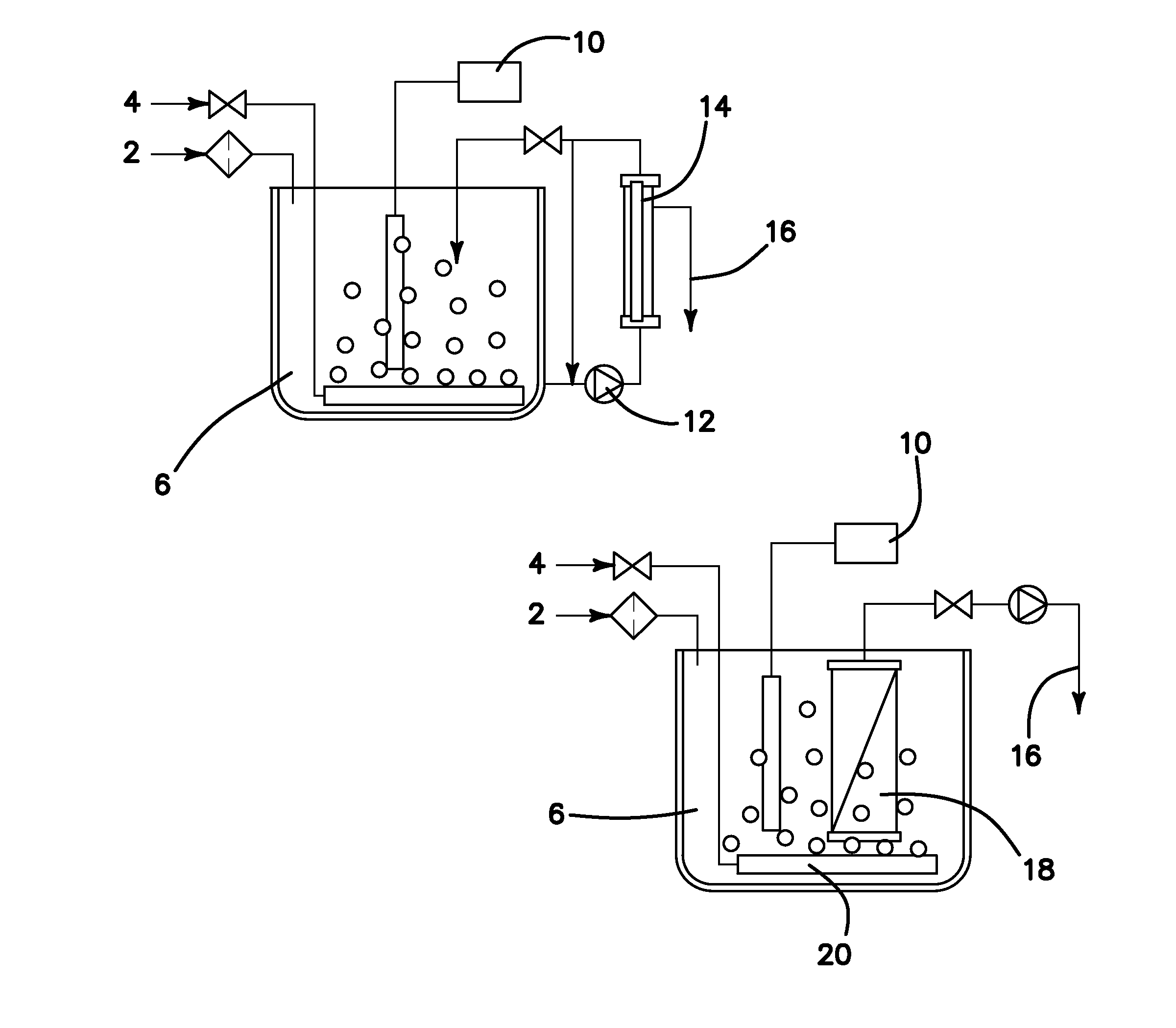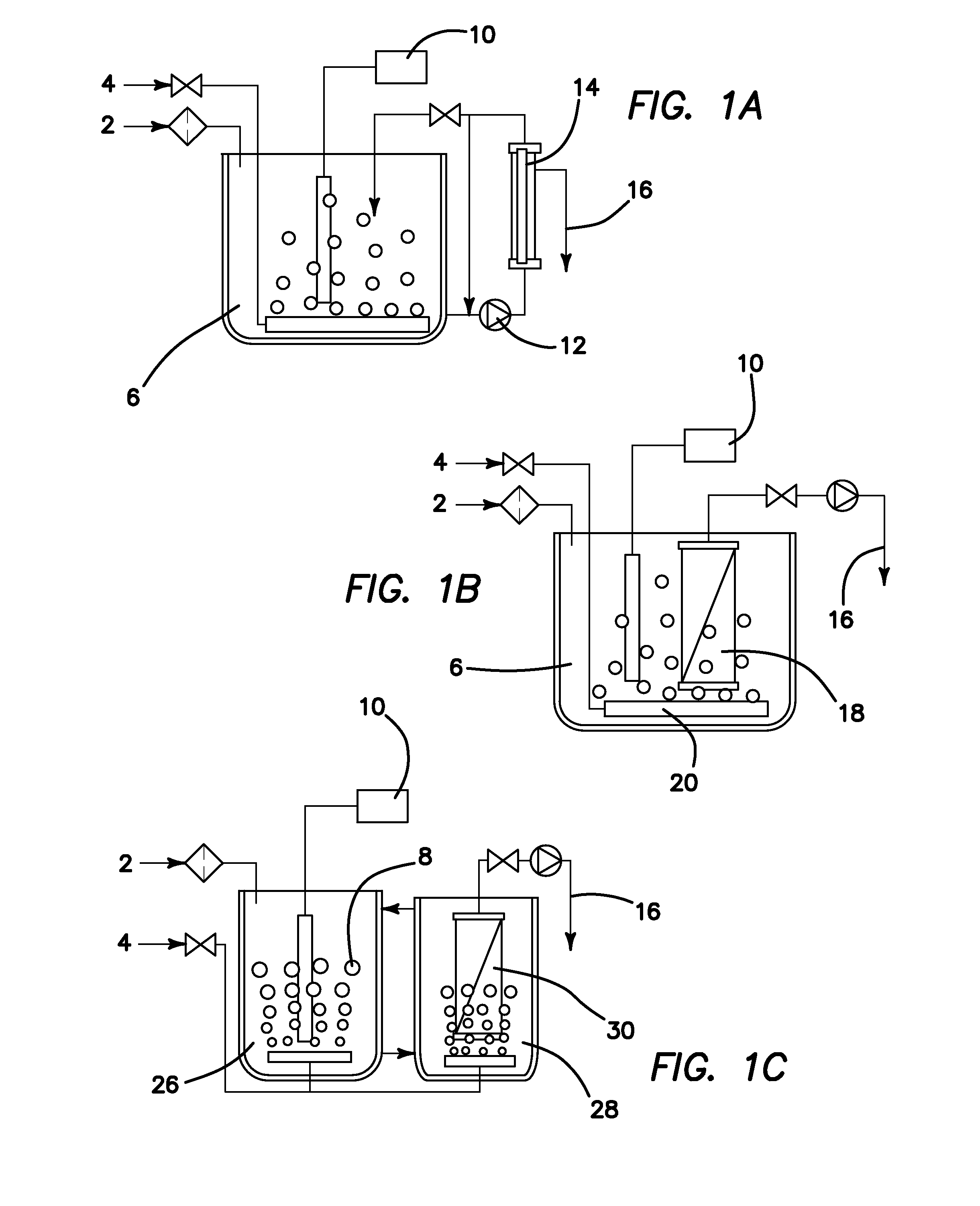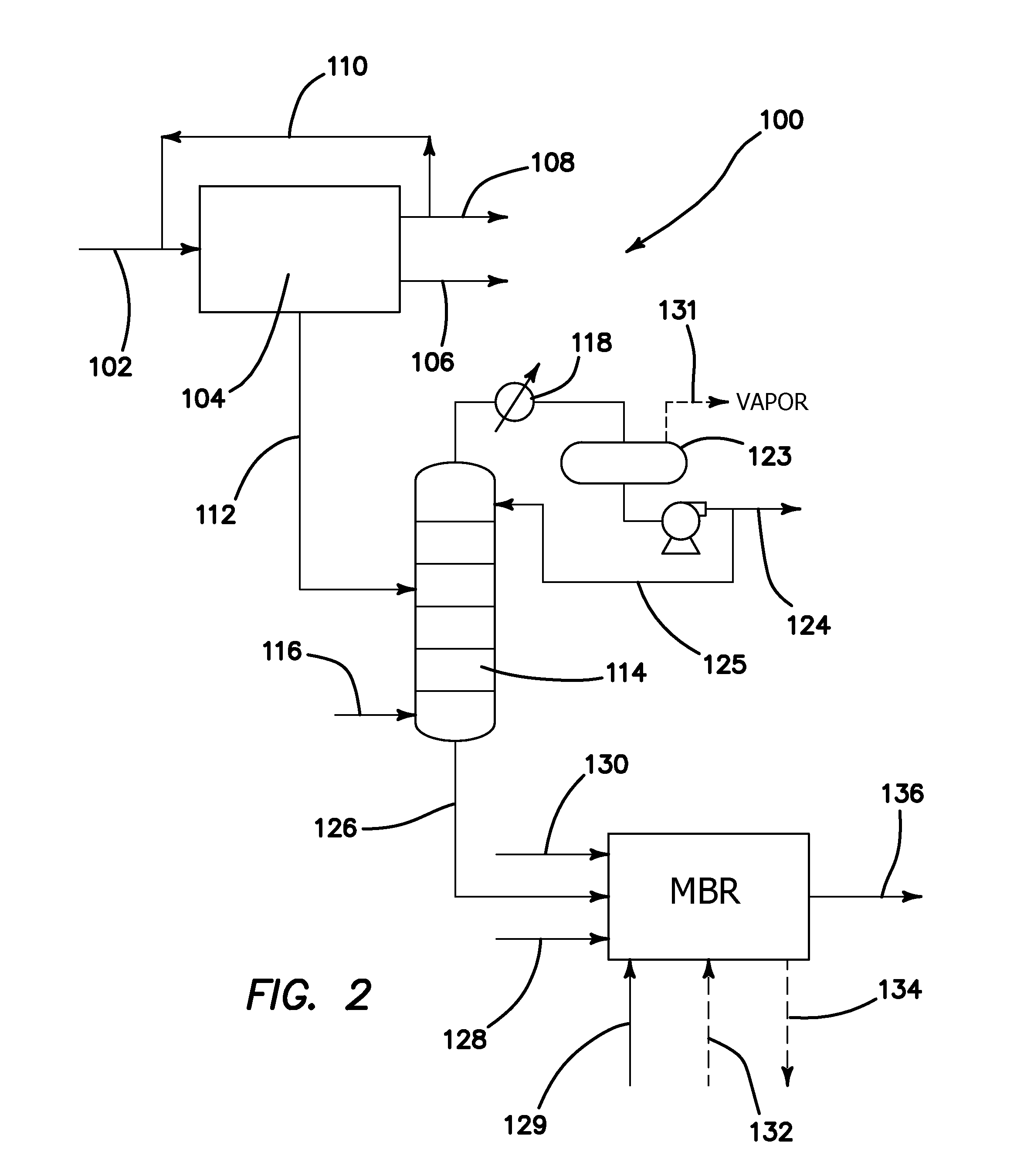Methods of Making Purified Water from the Fischer-Tropsch Process
a technology of purified water and fischertropsch, which is applied in the direction of vacuum distillation separation, other chemical processes, and the nature of treatment water, etc., can solve the problem of unsatisfactory plug flow, and achieve the effect of reducing the growth of biofilms
- Summary
- Abstract
- Description
- Claims
- Application Information
AI Technical Summary
Benefits of technology
Problems solved by technology
Method used
Image
Examples
examples
[0062]Described below is project aimed to establish the efficiency of treating FT produced water in an MBR. Two MBR pilot plants were employed, one fed with an analogue and the other with FT produced water which was stripped of the volatile fraction. Both treatability (in terms of COD removal) and performance are assessed based on the COD removal and sustainable flux under different operating conditions.
1 Materials and Methods
1.1 FT Produced Water
[0063]Around 2000 L of FT produced water (Table 1-1) was shipped from pilot GTL facility in Ohio, US. Samples were collected from separators and contained COD concentration of 25-30 g / l and pH 3.3. About 75% of the COD is made up by methanol and ethanol.
[0064]The absence of minerals in the FT produced water, including nitrogen and phosphorus (N & P) demanded dosing with micro-nutrients to sustain biomass growth (Tchobanoglous et al, 2004). For the smaller MBR pilot plant, a nutrient mix was prepared (Table 1-2) and blended the feed water. F...
PUM
 Login to View More
Login to View More Abstract
Description
Claims
Application Information
 Login to View More
Login to View More - R&D
- Intellectual Property
- Life Sciences
- Materials
- Tech Scout
- Unparalleled Data Quality
- Higher Quality Content
- 60% Fewer Hallucinations
Browse by: Latest US Patents, China's latest patents, Technical Efficacy Thesaurus, Application Domain, Technology Topic, Popular Technical Reports.
© 2025 PatSnap. All rights reserved.Legal|Privacy policy|Modern Slavery Act Transparency Statement|Sitemap|About US| Contact US: help@patsnap.com



